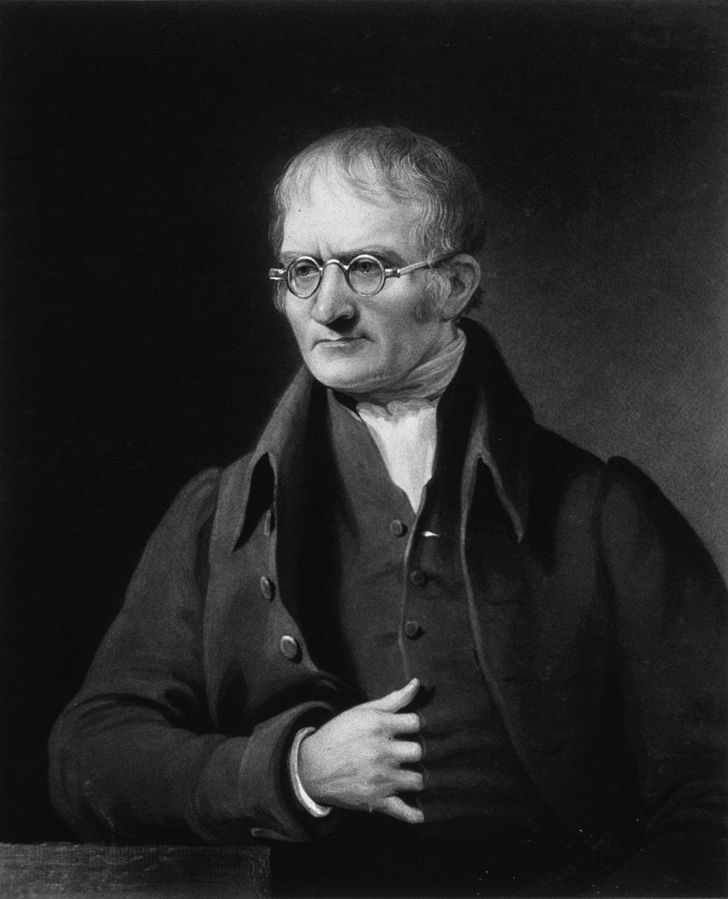Get Tech Tips
Subscribe to free tech tips.
Dalton’s Law

John Dalton was an English chemist and physicist born in 1766. He was born into a Quaker family of tradesmen, though he and his brother became teachers early in life. His family bought a Quaker school in Kendal, where he and his brother taught around 60 students.
Dalton separated from the church as a young adult, becoming a Dissenter. Religion and academia were linked at the time, so his choice barred him from getting an education in most English universities. Instead of receiving a formal education, he learned about philosophy, science, mathematics, and art from two mentors. Mentors Elihu Robinson and John Gough also nurtured Dalton’s interest in meteorology.
In 1793, Dalton headed for Manchester. He taught mathematics at New College, a dissenting academy. He published his first work on meteorology as hard science, not a mix of speculation and folklore. Although he received criticism, he continued studying meteorology by focusing on gases.
Dalton asserted that the air we breathe is a mixture of approximately 80% nitrogen and 20% oxygen. His view was highly disputed at the time, as most people believed that the atmosphere was composed of a single unknown compound. Although Dalton neglected trace elements, he was close to the proper nitrogen and oxygen percentages.
While studying the elements in our air, Dalton noted that a gas mixture’s total pressure was equal to the sum of the individual gases’ pressures. He called this phenomenon partial pressure. Dalton’s law explains the relationships between individual gas pressures and a gas mixture’s total pressure.
Later on, Dalton became even more famous for his works on atomic theory. He based his theory of partial pressures on the idea that similar atoms repel each other and different atoms behave neutrally. (Of course, that idea was incorrect.) Dalton argued that each element was composed of atoms of a specific size and mass. He eventually described atoms as spheres and assigned a few element combinations to compounds. Later scientific discoveries overturned Dalton’s ideas. Still, Dalton undeniably laid the foundation for atomic theory and matter studies in general.
The law
Dalton discovered that individual gases exerted their own pressures when he studied the gas mixture in the atmosphere. A gas mixture’s total pressure equals the sum of all individual gases’ pressures.

“File: Schematic Depicting Dalton's Law.jpg” by BlyumJ is licensed under CC BY-SA 4.0
However, Dalton’s law only applies to confined gases at a set volume. They also cannot chemically react with each other. If you were to combine a 1-ft3 container of oxygen at 30 PSIG and a 1-ft3 container of helium at 25 PSIG of helium into a single 1-ft3 container, you would have an overall pressure of 55 PSIG. (Notice that the volume stays the same.)
Where might we see Dalton’s law in HVAC/R?
All vapors obey Dalton’s law of partial pressures, so refrigerants in the vapor state will obey Dalton’s law.
For example, R-410A is a mixture of two different compounds: difluoromethane (R32) and pentafluoromethane (R125). When R-410A exists in the vapor state, its total pressure will be the combined pressures of the difluoromethane and the pentafluoromethane. Those two compounds have their own unique gas pressures, but we assess those separate pressures as one single pressure when they coexist in an R-410A mixture.
Again, Dalton’s law doesn’t apply to liquid refrigerants or matter in the saturated state. It is only true for gas mixtures with inert elements.
It’s also worth noting that gas pressure affects liquids’ boiling point (or condensation point), as a phase change depends on temperature and pressure. In the early 20th century, Albert Einstein and Leó Szilárd developed an absorption refrigerator based on partial pressures. They added ammonia vapor to the area surrounding a butane flask, which allowed the butane to evaporate as a mixture. The gas mixture could then condense and deliver the released heat to an external heat convector because of the ammonia vapor’s added pressure. (Einstein's refrigerator is just one form of absorption refrigeration; read more about absorption and adsorption refrigeration HERE.)
Even though our refrigerants only exist in the vapor state for part of the time, vapor mixtures still obey Dalton’s law inside the systems we work with daily. Its effects are especially notable on blends.
References
https://www.britannica.com/biography/John-Dalton
https://www.britannica.com/science/Daltons-law
http://www.self.gutenberg.org/articles/eng/Einstein_refrigerator
Special thanks
Modern Refrigeration and Air Conditioning, 21st edition (Andrew Althouse, Carl Turnquist, Alfred Bracciano, Daniel Bracciano, and Gloria Bracciano)
Refrigeration & Air Conditioning Technology, 9th edition (Eugene Silberstein, Jason Obrzut, John Tomczyk, Bill Whitman, and Bill Johnson)
These truly are the reference guides for the industry and deserve attribution for all such articles.










Comments
To leave a comment, you need to log in.
Log In